Key in a search term below to search our website.
Key in a search term below to search our website.
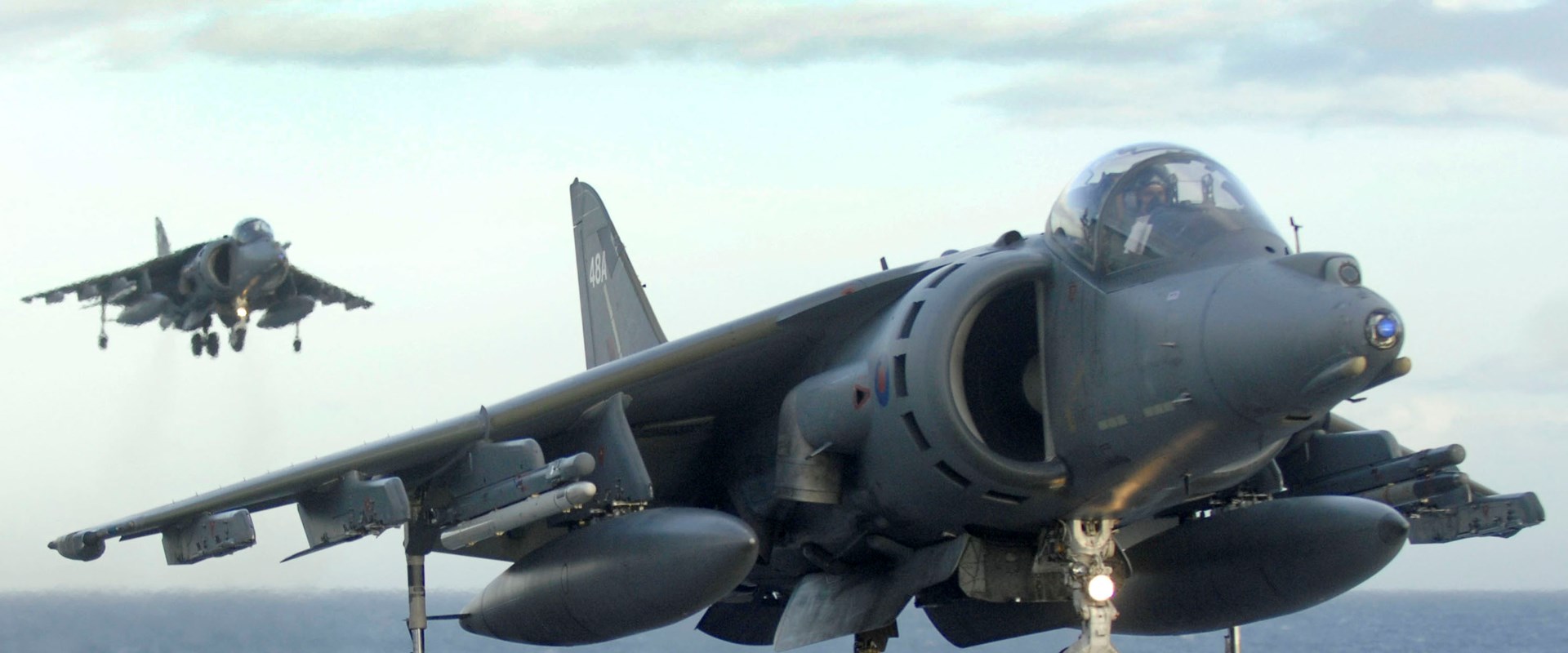
Two Harriers prepare to land onboard HMS Illustrious during Exercise Joint Warrior 2008. © Crown Copyright
http://www.defenceimagery.mod.uk/fotoweb/archives/5042-Downloadable%20Stock%20Images/Archive/Royal%20Navy/45149/45149692.jpg
Known as the ‘jump jet’, the Harrier was the world’s first vertical take-off combat aeroplane to enter operational service. The Harrier at the National Museum of Flight is the oldest in existence.
Date
1966
Mark
GR.1
Crew
1 (pilot)
Top speed
764 mph (1,200 km/h)
Range
403 miles (649 km)
Weapons
2 x 30mm cannons or 1,000lb (4543/5 kg) bomb/reconnaissance pod, 4,500lb (204kg) of additional armaments up to 4,500lb (2,041kg)
Museum reference
On display
Military Aviation Hangar, National Museum of Flight
Did you know?
The Harrier was decommissioned in 2011.
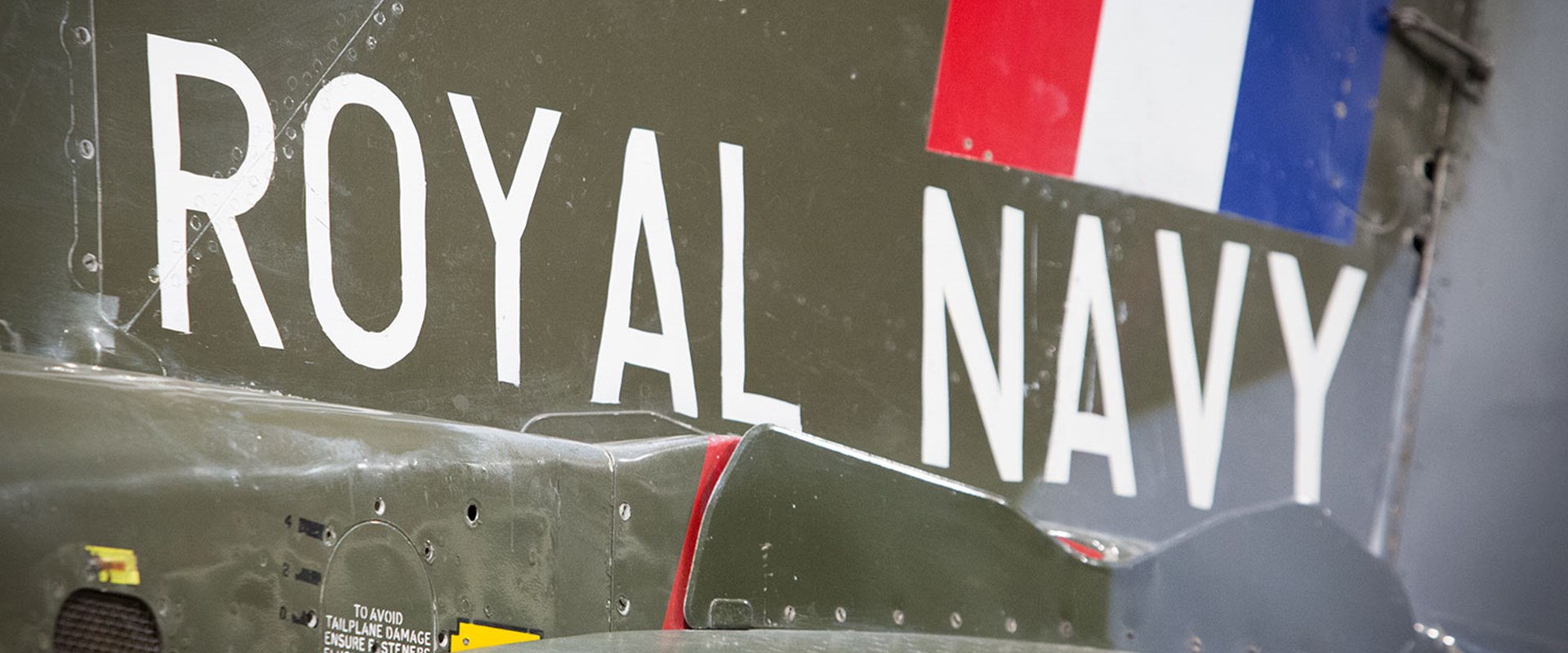
In 1957 Hawker Siddeley began work on a vertical take-off aeroplane, designated the P.1127. Two prototypes were built and the first flight was made in 1960. An improved version of the P.1127 was named the Kestrel and first flew in 1964. The Kestrel was evaluated by the Royal Air Force during 1965. As a result of these trials, the RAF ordered an upgraded Kestrel. It was originally designated the P.1127(RAF) but in 1967 was given the name Harrier.
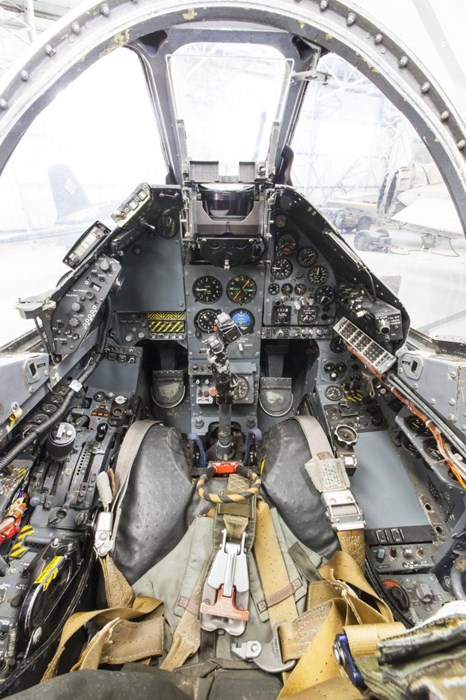
Above: Cockpit of the Harrier at the National Museum of Flight.
The Harrier is famous for its Vertical or Short Take-Off and Landing (V/STOL) capability. The value of an aircraft with vertical or short-take off and landing capability is that it does not need long runways to fly. Instead, it can operate from motorways, main roads or even from forest clearings, hidden under camouflage nets between missions. As a result, the Harriers would be almost impossible to locate and destroy.
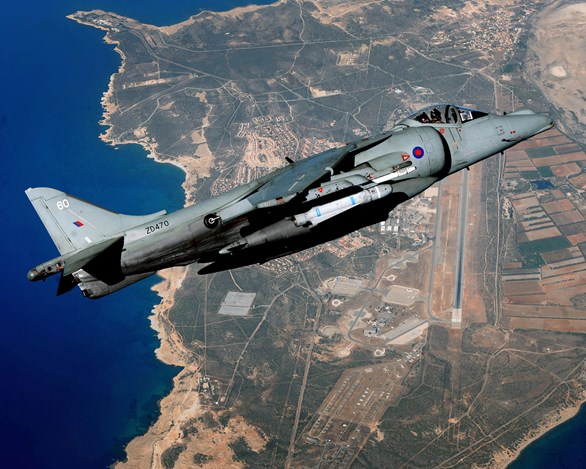
Above: A Joint Force Harrier jet is pictured high over RAF Akrotiri in Cyprus shortly before the iconic aircraft was decommissioned. © Crown Copyright.
The technology to achieve this took years of research and development. One of the early experimental testbeds was the Rolls-Royce Thrust Measuring Rig, nicknamed the Flying Bedstead. The Flying Bedstead first flew in 1954 and used angled jetpipes to direct the thrust from two Rolls-Royce Nene turbojets. This ‘vectored thrust’ allowed the Flying Bedstead to take-off and descend vertically, and to hover in mid-air.
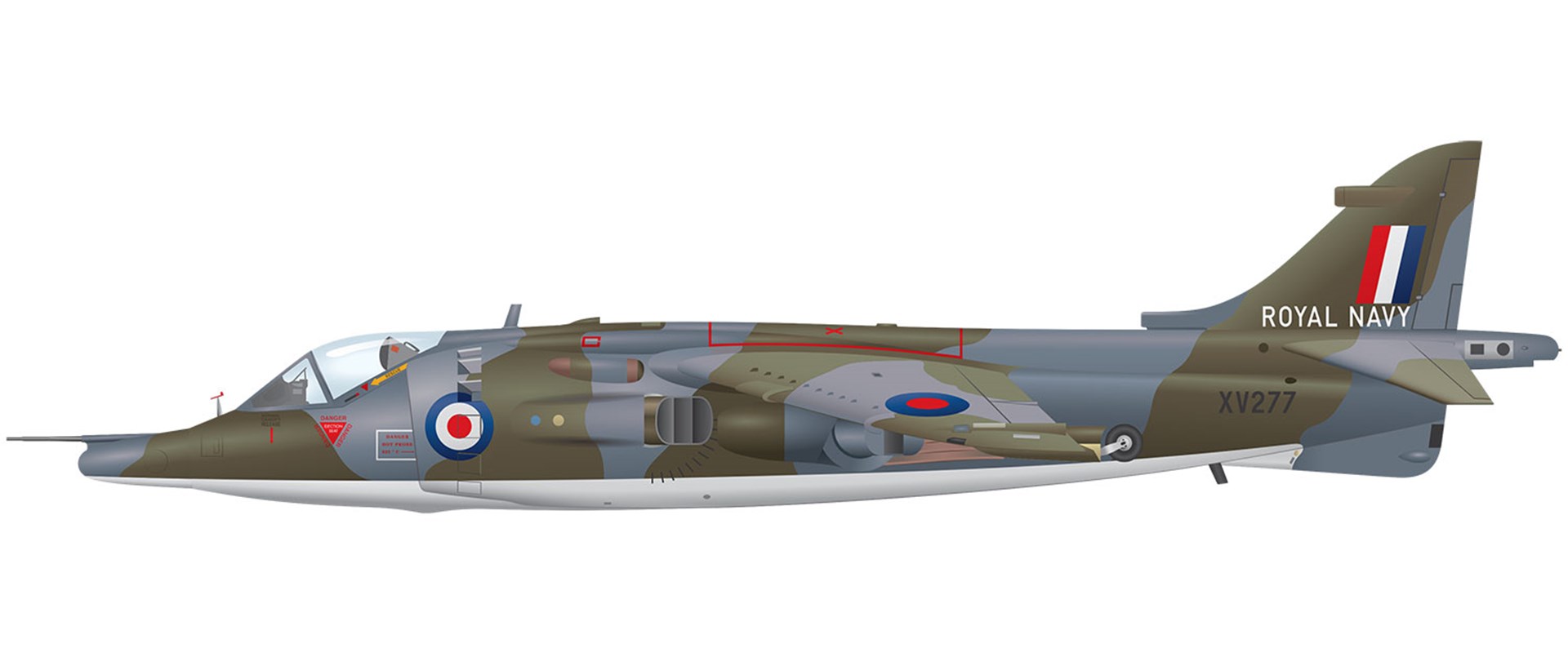
The technology to achieve this took years of research and development. One of the early experimental testbeds was the Rolls-Royce Thrust Measuring Rig, nicknamed the Flying Bedstead. The Flying Bedstead first flew in 1954 and used angled jetpipes to direct the thrust from two Rolls-Royce Nene turbojets. This ‘vectored thrust’ allowed the Flying Bedstead to take-off and descend vertically, and to hover in mid-air.
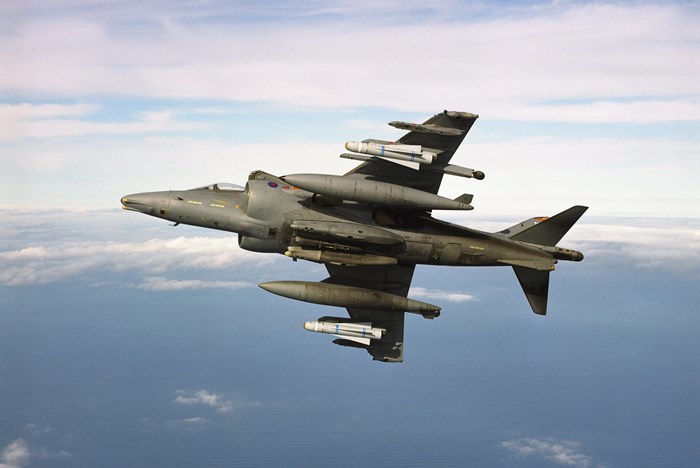
Above: The British Aerospace Harrier was used by the RAF in the close air support role © Crown Copyright